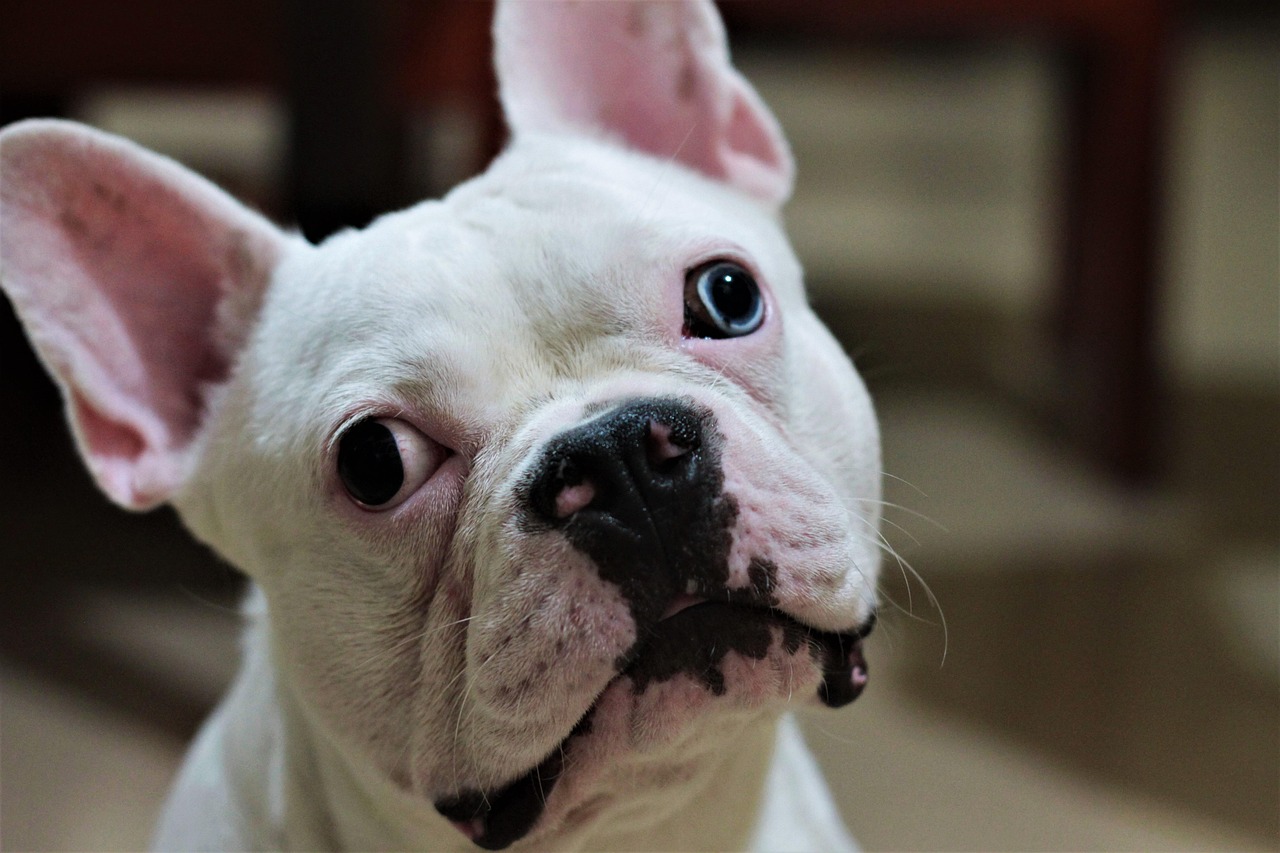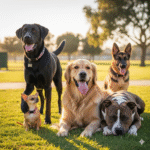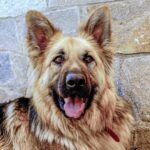Selection for short-nose and small size creates a behavioural trade-off in dogs
Brachycephalic (“short-nosed”) breeds like Pugs and French Bulldogs have surged in popularity, often celebrated as affectionate, easygoing companions. A new open-access study in Animals examines whether their behavior truly differs from longer-nosed dogs—and crucially, whether those differences stem from head shape itself or from factors such as small body size, owner demographics, and day-to-day management.
What the study did
Researchers analyzed two large-scale owner surveys (N = 5,613) covering 90 purebred breeds, pairing those responses with breed-average cephalic index (head-shape) data. They grouped breeds into dolichocephalic (long-nosed), mesocephalic (medium), and brachycephalic (short-nosed), and assessed eight behavioral variables: four personality traits (calmness, trainability, dog sociability, boldness) and four common problem behaviors (jumping up, pulling on leash, reactivity when guests arrive, and recall). Using generalized linear models and mediation analyses, they tested whether apparent head-shape effects were explained—or masked—by confounders such as body size, training history, owner experience and age, indoor vs. outdoor housing, and daily walk duration. To check robustness, they also re-ran analyses excluding large-bodied brachycephalic breeds.
Key findings
- Baseline differences: Dolichocephalic dogs were rated less calm and less bold than mesocephalic and brachycephalic dogs. Brachycephalic dogs were perceived as less trainable than both other groups. No group differences emerged in dog sociability.
- Problem behaviors: Brachycephalic dogs were more reactive to arriving guests than meso- and dolichocephalic dogs, and mesocephalic dogs were more reactive than dolichocephalic dogs. Both brachycephalic and mesocephalic dogs were less likely to come when called than dolichocephalic dogs. There were no meaningful differences for jumping up or leash pulling.
- Owner and management patterns: Owners of brachycephalic dogs tended to be younger and less experienced, kept their dogs primarily as companions, provided less formal training, housed them indoors, walked them for shorter durations, and were more likely to allow them on the bed. Brachycephalic dogs were also smaller and slightly younger on average.
- What’s head shape vs. everything else: Many “brachycephalic behaviors” were not driven by head shape per se. Reduced trainability and higher reactivity, for example, were largely explained by small body size, limited training experience, and owner management (“spoiling” patterns), rather than skull shape alone.
- Signals that do track with head shape: Some traits appeared directly linked to brachycephalic morphology even after accounting for confounders, including higher calmness, lower arousal, greater boldness, and poorer recall. These direct effects suggest a biological connection between skull/brain morphology and behavior.
- Robustness to size within brachycephalics: When large-bodied brachycephalic breeds were excluded, the overall pattern held, with only minor shifts (e.g., the boldness contrast for dolichocephalic vs. brachycephalic dogs softened).
Why it matters
For owners and trainers, the study reframes common narratives about “brachycephalic personality.” Some widely perceived negatives—like distractibility or reactivity—are not destiny; they often reflect modifiable factors such as training intensity, walk duration, and household routines. Conversely, some positives—like calmness—may be intrinsic to head-shape-related biology, yet can be obscured in everyday life by the same management patterns that tend to accompany small, flat-faced breeds.
For breeders and welfare professionals, the results highlight a trade-off: selection for short noses and small size is associated with behavioral tendencies that may make these dogs appealing companions, but management practices and owner profiles can amplify problem behaviors. Aligning breeding, owner education, and training support could improve welfare outcomes without relying on simplistic assumptions about “brachycephalic temperament.”
Caveats and next steps
The study relies on owner-reported behavior and breed-average head-shape indices, which can introduce perception and measurement biases. Although the authors controlled for many confounders and used mediation models, causal claims remain limited in cross-sectional survey data. Future work pairing individual dogs’ precise cranial measurements with longitudinal behavior tracking—and standardized training interventions—could further disentangle biology from environment.
Still, the takeaway is practical: with thoughtful management and training, many of the behaviors often blamed on head shape are tractable. And the traits that do seem linked to morphology can be planned for and supported—so the dogs people love can thrive in the lives they lead.
Source: Turcsán, B., & Kubinyi, E. (2025). Selection for short-nose and small size creates a behavioural trade-off in dogs. Animals, 15(15), 2221. https://www.mdpi.com/2076-2615/15/15/2221







